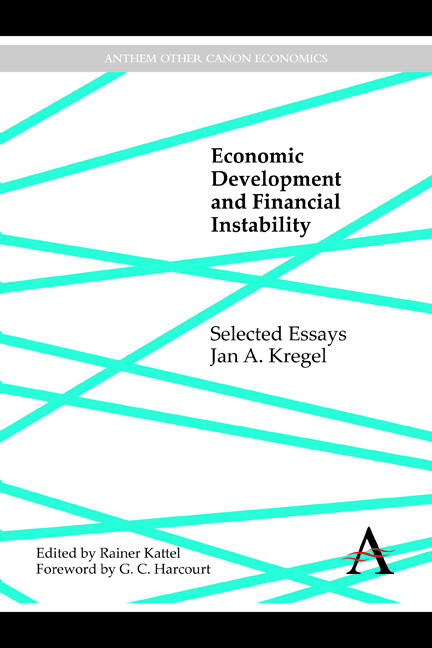Book contents
- Frontmatter
- Contents
- Foreword
- Publication History
- I Theoretical Discussions
- II Finance for Development
- III The Crisis in the US and the EU
- 16 Alternative Economic Analyses of German Monetary and Economic Unification: Monetarist and Post Keynesian
- 17 Currency Stabilization through Full Employment: Can EMU Combine Price Stability with Employment and Income Growth?
- 18 Minsky's “Cushions of Safety,” Systemic Risk and the Crisis in the Subprime Mortgage Market
- 19 Why Don't the Bailouts Work? Design of a New Financial System versus a Return to Normalcy
- 20 Is This the Minsky Moment for Reform of Financial Regulation?
- 21 Debtors' Crisis or Creditors' Crisis? Who Pays for the European Sovereign and Subprime Mortgage Losses?
- 22 Six Lessons from the Euro Crisis
- 23 Minsky and the Narrow Banking Proposal: No Solution for Financial Reform
- Index
23 - Minsky and the Narrow Banking Proposal: No Solution for Financial Reform
from III - The Crisis in the US and the EU
Published online by Cambridge University Press: 05 November 2014
- Frontmatter
- Contents
- Foreword
- Publication History
- I Theoretical Discussions
- II Finance for Development
- III The Crisis in the US and the EU
- 16 Alternative Economic Analyses of German Monetary and Economic Unification: Monetarist and Post Keynesian
- 17 Currency Stabilization through Full Employment: Can EMU Combine Price Stability with Employment and Income Growth?
- 18 Minsky's “Cushions of Safety,” Systemic Risk and the Crisis in the Subprime Mortgage Market
- 19 Why Don't the Bailouts Work? Design of a New Financial System versus a Return to Normalcy
- 20 Is This the Minsky Moment for Reform of Financial Regulation?
- 21 Debtors' Crisis or Creditors' Crisis? Who Pays for the European Sovereign and Subprime Mortgage Losses?
- 22 Six Lessons from the Euro Crisis
- 23 Minsky and the Narrow Banking Proposal: No Solution for Financial Reform
- Index
Summary
Introduction
The recent losses at JPMorgan Chase, the money laundering activities of HSBC, and the recent discovery of collusive activity to influence the London Interbank Offered Rate by the money market desks of some of the largest global banks, some two years after the adoption of the Dodd-Frank Act, have led to calls for a more rigorous approach to the regulation of large multifunction banks that are clearly too big to manage and too big to regulate. One response has been to suggest a simple breakup of the largest banks.
Both the president of the Federal Reserve Bank of Dallas, Richard Fisher (2012), and the former president of the Federal Reserve Bank of Kansas City, Thomas Hoenig (2009), have formally proposed the dissolution of the largest complex US financial institutions that dominate the financial system. But this proposal deals only with the size of financial institutions; it does not indicate what the structure of the smaller institutions should be. Creating a greater number of smaller, independent financial holding companies would not necessarily simplify supervision if these companies were still dealing in multiple types of complex, interconnected financing activities involving structured lending instruments. Simply making institutions smaller need not make them safer and more stable, if they are permitted the same range of activities involving the same types of financial instruments.
- Type
- Chapter
- Information
- Economic Development and Financial InstabilitySelected Essays, pp. 343 - 348Publisher: Anthem PressPrint publication year: 2014



